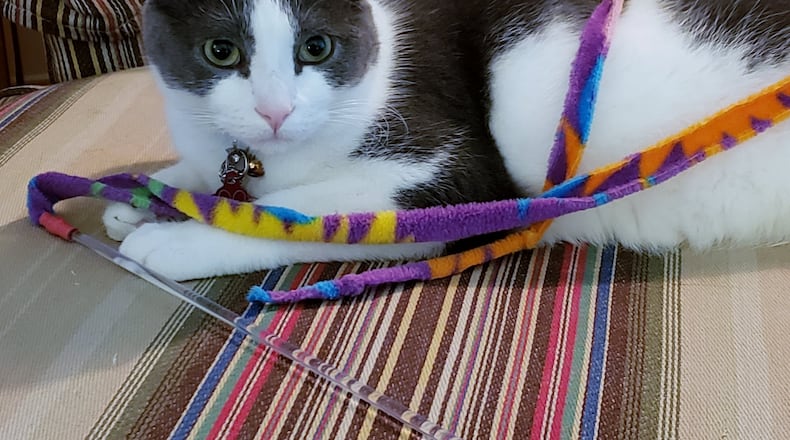Jennifer Nelson. in a column about cats’ intelligence for petmd.com, gives cat owners five areas to consider when determining if their feline is smart.
So, with a couple of rubs to the forehead of my “cookie,” I attempted to gauge his intelligence.
First, social ability. How social is Pip? Comes when called? Greets us when we come home? Sits where he knows he’ll get rubbed?
Check. Check. Check.
Yell “Pip! Pip!” and the feline comes running. He greets us when we get home by jumping on my lap and rubs up against me until we oblige his petting request. Finally, the feline has taught us that when he lies down next to us, he’s gracing us with his presence, and if he’s sitting on us, he wants our undivided attention.
Nelson’s second factor is survival skills. Is Pip self-reliant? Can he take care of himself? Would we feel comfortable leaving Pip at home for the night? A weekend?
Absolutely to all the above.
Pip enjoys his solitude. You can often find him lounging in his indoor tree watching the birds at our backyard feeders.
He also maneuvers in and out of my wheelchair’s frame without getting stuck or getting a paw hurt by rolling wheels. How I haven’t nipped his tail, paws or other furry parts amazes me.
The third factor in determining a cat’s intelligence is memory. Does Pip remember what time he eats? Where we put his bedtime treat? If we play with him at a certain time, does he grab the toys and expect to play at the same time the next day?
The answer to all three of these questions is yes. When the morning alarm goes off, Pip is literally in my husband Ed’s face, and the kitty stays with his dad until he is fed. Dinner time is similar. Pip tries to lead whoever is in the kitchen to his food bowl.
Teddy, our 6-year-old black Lab, gets a few small cheese cubes at bedtime. About a month ago, I gave Pip three pieces of his kibble at bedtime. I placed it on the chaise lounge in the master bedroom. The next night, Pip was waiting right there for me – and his kibble.
The fourth area is trainability. With food reinforcements, can Pip learn a trick?
This is one area we haven’t technically explored. We tell Teddy to bring us a toy and he will go to his toy box, pull one out and bring it over so we can play with him. We started asking Pip to bring us a toy. If Pip is interested in playing, he’ll usually grab one of his wands and pull it over to one of us. Neither animal gets treats for carrying out our requests.
The fifth and final area is showing unhappiness. Does Pip let us know when he doesn’t like something?
Pip knocks this one out of the park. When he’s not happy he makes sure we know all about it. He doesn’t stop squawking until we have fixed the problem. It could be a toy lodged between two pieces of furniture or wanting the bathroom sink turned on – NOW!
So, do I still think Pip is smart after considering all five factors? You bet. But again, I’m a little biased.
Karin Spicer, a magazine writer, has been entertaining families for more than 20 years. She lives in Bellbrook with her family and two furry animals all who provide inspiration for her work. She can be reached at spicerkarin@gmail.com.
Where to find tricks to teach your cat
- iheartcats.com/10 fun tricks to teach your cat
- www.petfinder.com/cats/cat behavior and training/how to teach a cat tricks
- catspro.com/how to teach a cat tricks.html
About the Author

